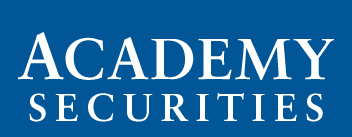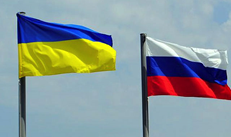Month: April 2021
Russian Troop Increase on the Ukrainian Border
What has Happened:
Over the last several weeks, Russia has moved 40,000+ troops to Ukraine’s eastern border and an additional 40,000+ troops in Crimea, the largest troop movement since Putin annexed Crimea from Ukraine in 2014. The U.S. reaction from Secretary of State Blinken is that, “President Biden’s been very clear about this: if Russia acts recklessly or aggressively, there will be costs, there will be consequences.” European responses have been of a similar tone, threatening additional sanctions if the situation escalates. Meanwhile, Moscow has reiterated that these troop movements are just part of military exercises. Of note, in Ukraine’s eastern Donbas region, where fighting has claimed over 13,000 lives over the last seven years, Putin recently accused Ukraine of “dangerous provocative actions.”
Why it Matters:
There is much speculation as to why this is happening now. As we have addressed in our Around the World reports and in the April 13th T-Report, Putin will continue to do everything in his power to divert the Russian peoples’ attention from what is actually going on in Russia. The Russian economy, which was in decline before COVID, has continued to slide and unemployment is high. A few months ago, millions took to the streets to protest the detention and sentencing of Alexei Navalny (and there will likely be more protests in the spring in Russia and in neighboring Belarus). Russia has parliamentary elections in the fall of this year and the possibility exists that Putin is looking for a “nationalistic” event to allow him to “come to the defense” of embattled Russians in the Ukraine.
Putin is walking a very fine line here. While Ukraine is not in NATO, the U.S. has supported President Zelensky with weapons sales including Javelin anti-tank missiles (these weapons were designed to be a deterrent to Russia). With respect to Putin’s strategy, while the element of surprise was lost with the massive troop movements, a large invasion force was always considered unlikely as Russia used a more covert strategy in the 2014 annexation of Crimea. What is the end game here for Russia? Is this just a way to test the resolve of the U.S. at a time when Putin perceives there is some discord in the U.S and within NATO? Time will tell, but our Geopolitical Intelligence Group will be monitoring the situation very closely.
We start off with General (ret.) Marks, who believes that Putin is testing the Biden administration.
“Russia’s adventure to reach deeper into Ukraine is not unexpected. The Minsk peace deal agreed to in 2015 following Russia’s annexation of Crimea the previous year has not been enforced. Independent elections have not occurred, the required security zone has not been established, and an “inclusive national dialogue” between Russia and Ukraine is silent. Russia views its military actions in the Donbas region of Ukraine as a legal extension of the Minsk protocol to establish the security zone. To Moscow, Russian forces are acting in their national interest. Finally, Putin is testing the Biden administration and its declared strategy of multilateralism in global affairs. Just last month, President Biden called Putin a “killer” which gives Putin a ton of maneuvering room. Remember, Ukraine is not a member of NATO. NATO did not act in 2014 when Russia annexed Crimea. It will not act now. The only thing restraining Putin is Putin.” General Spider Marks
General (Ret.) Walsh believes that this is a show of force to demonstrate strength, but this threat must be taken seriously.
“The Russian military buildup on the Ukrainian border is Vladimir Putin demonstrating his strength and power in the face of President Biden’s tough talk on Russia and Ukrainian President Zelensky’s outreach to NATO to become a member. The ongoing conflict makes joining NATO more difficult and is one of the reasons Putin has massed troops and equipment on the border. He is challenging Biden and Europe on who is tougher. Additionally, Putin wants the U.S. and the European Union sanctions on Russia removed. He cannot reciprocate in kind economically (like China) due to the weakness of the Russian economy. He can only use his military power to influence others and that is what he is doing.
Putin is a master of grey zone conflict. His tactics include spreading a disinformation campaign that causes fear, intimidation, frenzy, and chaos within the Ukrainian government and its citizens. His military force build up is threatening and destabilizing and is occurring at the very time the U.S. is reaching out to lead and strengthen the NATO alliance. Both Secretary of State Antony Blinken and Secretary of Defense Lloyd Austin are visiting NATO this week. This is the perfect time for Putin to gamble with his mischief. He is using a tactic once used by Hitler in massing troops on the border of another country and stating that they may go into eastern Ukraine to prevent a “human catastrophe.” Putin issued Russian passports to Russian speaking Ukrainians as part of his “grey zone” plan.
Both Ukraine and NATO must take Putin’s threats as legitimate. It is the largest force build up since 2014 when Russian forces annexed parts of eastern Ukraine. That move came after similar annexations in Georgia and Crimea.” General Robert Walsh
Bottom Line:
What is clear is that Putin feels that this is a good time to try to test the resolve of the U.S., NATO, and Zelensky as a show of strength. As General Stewart from our GIG has said, “Recidivist Russia” desires to be viewed as a global superpower once again and will continue to take steps to achieve this goal. However, the U.S. is standing firm in support of Ukraine as demonstrated by the fact that a recent phone call between President Biden and President Zelensky, “affirmed the United States’ unwavering support for Ukraine’s sovereignty and territorial integrity in the face of Russia’s ongoing aggression in the Donbas and Crimea.” The U.S. is also deploying warships to the Black Sea as a further show of support. Putin’s goals (and strategy) here will soon be evident, but in the meantime, tensions will continue to rise.
Original Post 04/13/2021



